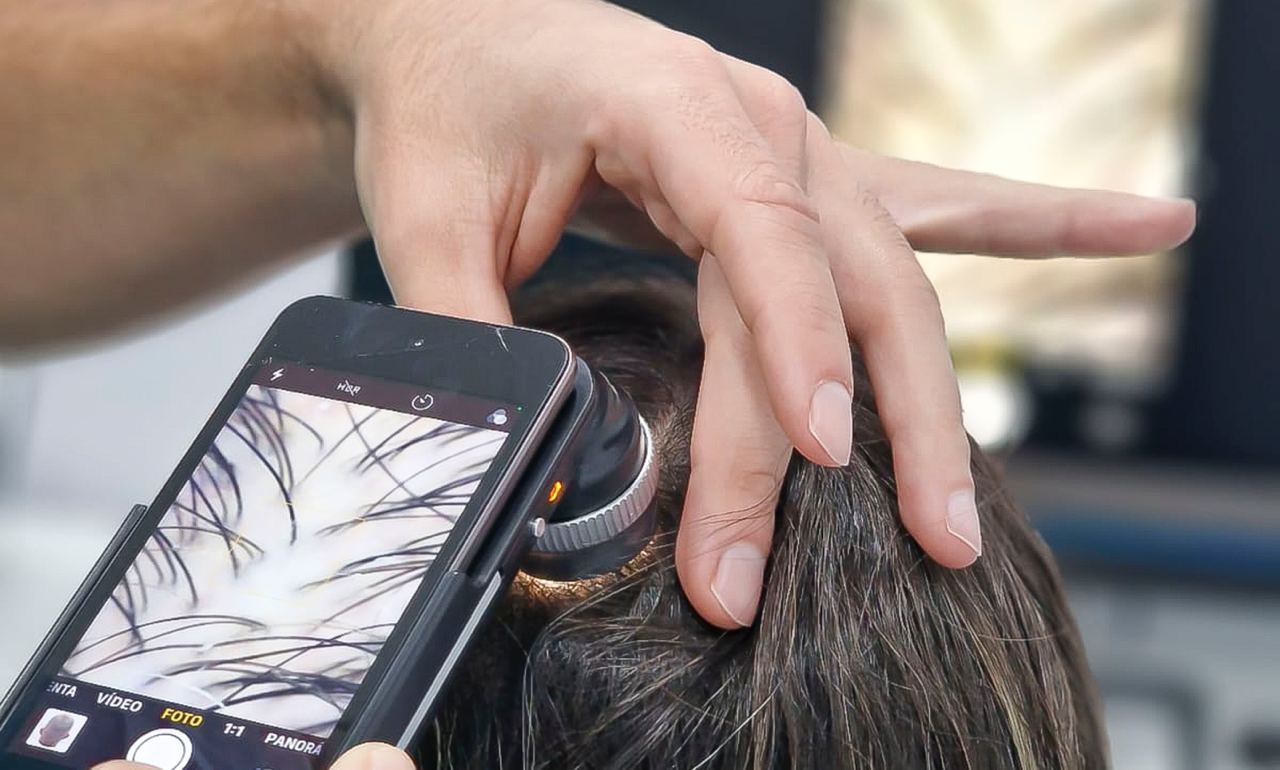
The hair transplant can be done through several techniques. One of them is known as the FUSS technique, which was widespread, especially a few years ago, although it is still being used today. Knowing what the FUSS technique consists of and what is the procedure in a hair transplant, as well as the main advantages and disadvantages with respect to other methods of hair implantation, can be decisive in choosing one technique or another.
From Hospital Capilar, an expert hair transplant clinic in Madrid, Murcia and Pontevedra, we tell you everything you need to know about the FUSS technique in a hair graft.
The FUSS technique in a capillary graft refers to the acronym Follicular Unit Strip Surgery, or better known as the strip technique. This method consists of extracting the follicles necessary to perform the implant removing a strip of the patient's scalp from their donor area. In this case, the area where the strip is removed is the neck.
It is a surgical process whose procedure consists of several phases. Below we will tell you each of the stages that a patient goes through who opts for the FUSS technique in a hair graft.
The first thing to do is the front line design and the rest of the recipient area of the patient, as well as the delimitation of the donor area. This is done by the surgeon according to the expectations and tastes of the patient, as well as his physiognomy and condition of the scalp.
The hair graft process with the FUSS technique does not require general anesthesia, only used Anesthesia local to sleep the area to be intervened. That is, the patient remains awake and conscious throughout the entire surgery.
Once the area is asleep, the medical team proceeds to extract the strip of scalp from the donor area. The length and width of the strip depends on the number of follicular units needed to cover the area affected by baldness. The depth of the strip ranges between 3 and 5 millimeters.
When the scalp strip has been removed, the surgeon proceeds to sew the area. These stitches are removed from the week after surgery.
With the previously extracted scalp strip, the healthcare team proceeds to separate and classify the follicular units. The follicles contain from 1 to 4 hairs and they are classified according to the number of hairs per follicular unit. In the frontal area, follicles containing one hair are usually implanted to achieve a natural effect, while more hairs are implanted in the crown and intermediate area of the head.
The surgeon proceeds to open the channels where the extracted follicles will be implanted in the recipient area with a scalpel. This supposes a precision exercise by the surgeon since the angle and natural direction of hair growth must be carefully studied, as well as the density that you want to provide to the area.
The capillary graft with the FUSS technique ends with the implantation of the previously extracted follicular units. This is done with forceps and they are individually grafted into the cavities opened by the surgeon in the area affected by the alopecia.
The FUSS technique in a capillary graft is currently a method that is not normally used, since it is more invasive than other types of more modern techniques. The FUE technique (Follicular Unit Extraction) is the most widespread today and presents several differences with the aforementioned FUSS technique.
The main difference lies in the way of extracting the hair follicles. While the FUSS technique in a hair graft requires removing a strip of skin with its subsequent suture, in the FUE technique it is not necessary. The extraction of hair follicles in a FUE hair implant is performed with a punch with a micromotor with which they are extracted one by one without the need to remove the skin.
Due to the need to extract a strip of skin from the scalp, the FUSS technique in a hair transplant leaves a visible scar in the donor area. It is true that with the length of the hair it is hidden, but it does leave a scar. However, the FUE technique does not leave visible scars thanks to the extraction method used, so the results are more natural.
All this makes the FUE hair transplant is currently the most widespread and that, in many hair clinics, the FUSS technique is no longer practiced in a hair graft.

En Hospital Capilar, a clinic specialized in FUE hair grafting in Madrid, Murcia and Pontevedra, we work to achieve the best results from the hair implant. It all starts with a good medical assessment, and in Hospital Capilar you can do it at no cost. Request information and put yourself in the hands of professionals!
Sanitary Reg. No. Pontevedra: C-36-003121 Sanitary Reg. No. Madrid: C517593 Sanitary Reg. No. Murcia: 30800014


Copyright © 2021 - Legal Notice and Privacy Policy - Cookies policy